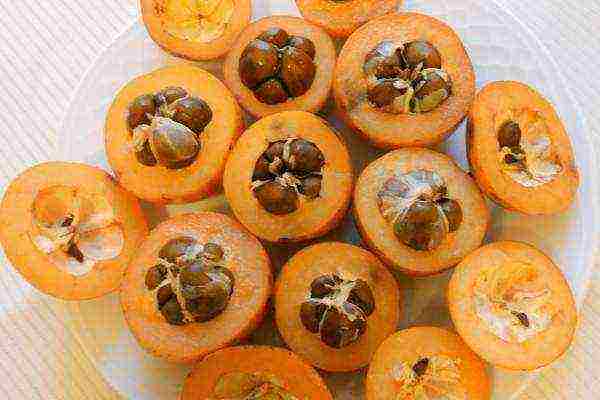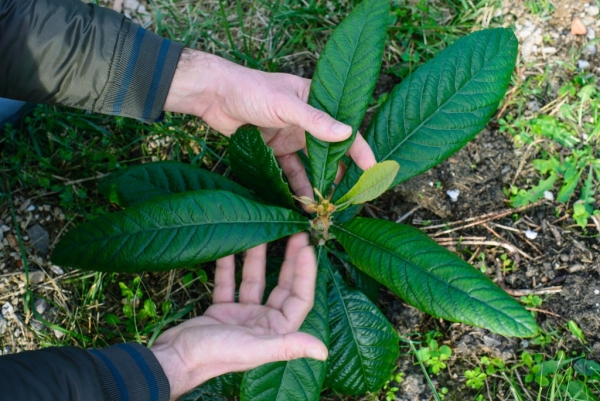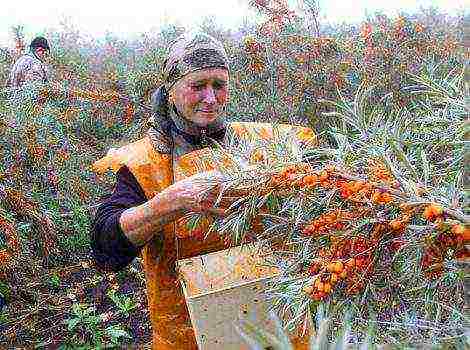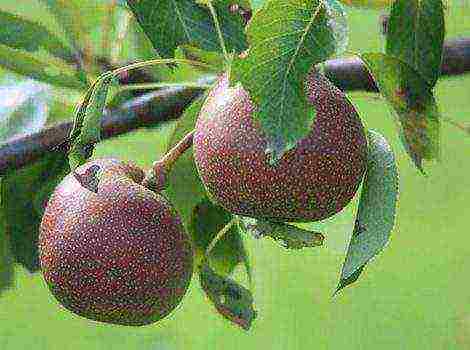Content
- 1 How to properly grow medlar at home
- 1.1 Cultivation of medlar in the Moscow region and in Ukraine
- 1.2 The presence of useful properties and contraindications
- 1.3 Healing properties of leaves and orange berries
- 1.4 How to grow a culture at home from a bone
- 1.5 Correct planting and plant care
- 1.6 Harvesting and storage
- 1.7 Popular varieties of exotic fruit
How to properly grow medlar at home
Medlar is an evergreen tropical plant... The entire trunk is entwined with dark gray bark. The leaves are large and have a gloss on the surface.
During flowering, the plant develops white fragrant flowers. The fruit is characterized by a spherical or pear-shaped shape and a thin skin. Ripe fruit tastes sour.
Is it possible to grow medlar at home in Russia, how to do it, you will learn from the article.
Cultivation of medlar in the Moscow region and in Ukraine
Southeast Asia is considered the homeland of the tropical fruit. The culture is grown in the Caucasus and Turkey. Warm countries are suitable for plant breeding, where the temperature does not drop below 0 Celsius.
If you grow a medlar in central Russia, in the Moscow region or in Ukraine, you get an ornamental shrub. But observing agrotechnical recommendations, you will get a beautiful tree with delicious fruits.
The presence of useful properties and contraindications
Medlar berries contain a large amount of useful vitamins and minerals. The culture has a low calorie content.
The fruit contains the following beneficial substances:
- vitamins A, B, C;
- folic and ascorbic acid;
- potassium;
- iodine;
- manganese;
- selenium;
- calcium;
- magnesium.

Dietitians usually prescribe the herb for overweight... If consumed in sufficient quantity, the fruit will bring great benefits to the body.
In cooking, jams, compotes, jam, liqueur liqueurs are prepared from medlar.
Who is not recommended eat tropical fruit:
- If stomach and duodenal ulcers are found, exclude the plant from the diet.
- If the pancreas is inflamed, this is a contraindication for eating medlar.
- With high acidity and severe gastritis, it is not recommended to eat fruit.
Wine and juices will only harm such people, while jams and preserves will be beneficial.
A tropical plant can cause an allergic reaction, therefore, for children, the use of culture should be limited or given after consulting a specialist.
Medlar is a Japanese relative of the Russian hawthorn ^
Healing properties of leaves and orange berries
Medlar, like other fruits, can bring many benefits to the human body:
- From a decoction of leaves you get an excellent hemostatic agent.
- Fruit can be applied for the treatment of urolithiasisto get the stones out.
- Healing culture acts as first assistant in case of gastrointestinal diseases... After eating pilaf, digestion improves. To get rid of bloody diarrhea, you need to prepare a decoction of unripe fruit.
- Alcohol tincture will help cure asthma and bronchitismade from the plant. Thanks to the use of this remedy, breathing is facilitated, the cough gradually disappears. Tincture can treat heart pain.
- If infusion of the leaves of the variety gargle, colds will not be or will disappear for a long time.
If a person has kidney dysfunction, it is recommended to use medlar to increase their filtration. This fruit contains molecular water, so it is easy for the human body to get rid of toxins after eating the plant.
How to grow a culture at home from a bone
The common seeds of the plant serve as seedlings.... Before growing the seeds, it is recommended to keep them in the cold for no more than 3-4 months.
Natural conditions allow the formation of shoots for 2-3 years of life, when the destruction of the shell occurs.
Such processing allows you to plant a crop in the fall in open ground, in the spring you can expect the appearance of sprouts. Before planting a medlar, seeds should be in warm water during the day.
Use sawdust, peat or plastic wrap to mulch the soil. A good option for planting seeds indoors: after the formation of the first shoots 25-30 centimeters, the plant must be grown in advance and placed in the designated place.

Correct planting and plant care
It is necessary to plant seedlings in prepared soil.containing the following components:
- deciduous land;
- sand;
- humus.
It is recommended to dig a hole before planting, not exceeding the size of the soil clod, designed for the root system. The seedlings are placed in the holes neatly without damaging the roots, and then they must be covered with soil mixture on top.

Cutting the leaves in half can reduce moisture evaporation.... To prevent decay, as well as to prevent the penetration of pathogens, it is recommended to pour wood ash in the cut points.
Crop care:
- in the summer, the plant needs abundant watering, preventing the soil from drying out;
- deciduous cover does not require constant spraying;
- direct sunlight is not a hindrance for the variety, lighting should be sufficient;
- after harvesting, it is necessary to trim the crown;
- a soil mixture taken in equal proportions is excellent;
- from April to September, top dressing must be carried out;
- every spring, young trees need to be replanted; for adult plants, the transplant is done once every 3-4 years.
Artificial pollination is necessary for the fruit during the flowering period... It is necessary to deal with the formation of the crown, cut dry and damaged branches in time.
Most gardeners know that the culture is susceptible to disease, as well as attack by pests... The plant eats aphids and thyroid gland.
Twice a season, the shrub needs insecticide treatment... Thus, the variety can be protected from spoilage.
Carry out the treatment with "Fitoverm" - no more than 2 milligrams per 1 liter of water, "Insegar" - use 5 grams of the drug for 10 liters of water, "Lepidocid" - dissolve 30 grams of the substance in 10 liters of water.
Harvesting and storage
After dyeing the fruit, do not harvest immediately. During this period, the fruit pulp has excessive astringency.
When the fruits begin to turn brown, the tart taste disappears, the plant becomes sweet. and suitable for collection and further use.
Gather ripe fruits carefully, without damaging them. Whole fruit will stand for a long time and will not spoil.
For storing tropical crops, it is necessary to provide a cool place without access to light., but it is allowed to store the plant at room temperature. The fruits should not come into contact with each other during laying.

Popular varieties of exotic fruit
To grow a varietal loquat, it is necessary to choose seedlings with the best qualities of the mother plant.
Tanaka - fruits are large, yellow-orange colored. Usually they reach a weight of 50-80 grams. The fragrant pink pulp is characterized by the presence of juiciness and a delicate sweet and sour taste.
Champagne - a large-sized crop with a slight fluff, the color of the fruit is bright yellow. The pulp has a light creamy hue, the taste of the fruit is delicate and pleasant.
Premier - the fruits of this variety are distinguished by an orange-yellow tint. This variety has a juicy creamy pulp with a delicate sour taste.
Sayles - the usual weight for a ripe fruit is 80 grams. The culture tastes like apricot.
In addition to high taste, the fruits are preserved for a long time, they are not damaged during transportation. Simple agrotechnical recommendations allow a novice gardener to grow at home.
Without leaving your home after 4-5 years, you can collect a good harvest of exotic fruits.
Morozko - is considered a suitable crop for growing not only indoors or in a greenhouse, but also for a winter garden. The low degree of wood fragility allows the plant to be set in any shape.
Large fruits, rich in aroma and lack of astringency, are characterized by the presence of a large amount of vitamins. The berries are red-brown in color.

Among the fruit trees in the garden, the medlar will take pride of place and will delight its owner with delicious fruits for many years.
This wonderful tropical fruit is suitable for fresh consumption, as it is rich in beneficial properties.
The peel is removed from the plant before use.... It is not useful, does not have pleasant taste, and it is advisable not to use it.


